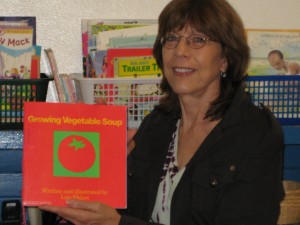As a teacher, you can play an important role in Farm to School efforts, particularly in structuring educational experiences and reinforcing the use of local foods in school meals. You might consider infusing Farm to School concepts in ongoing lessons and activities. For example, you could highlight seasonally-available, locally-produced foods in nutrition lessons, or as a classroom fundraiser, choose to sell local products. As Farm to School programs link schools with local farms, students, farmers and local communities all benefit. Farm to School programs focus on serving local products in school meals, as well as on engaging students in the local food and agriculture system through classroom activities, gardening and field experiences.
Education
School-based education about Farm to School may involve:
Reinforcing Local Foods in School Meals
Ask your school’s food service director about local foods served in school meals. You can help introduce these foods to students through classroom discussions and taste tests, as described in A Guide to Taste Testing Local Food in Schools by VT FEED, and available to download from their website. To learn more about seasonal availability of local foods see the NYS Fruit and Vegetable Harvest Calendar by New York State Department of Agriculture and Markets, and My(Northeast)Plate by NYS Department of Agriculture and Markets and Cornell Cooperative Extension. Also, for background about the basics of school meal programs:
- Review Healthier School Meals: A Summary of the New USDA Standards for School Breakfast and Lunch by Food Research and Action Council and the National Farm to School Organization’s, Farm to School: A Tool for Success with the New Nutrition Standards, to understand nutrition standards for school meals and how purchasing local foods supports the new school meal requirements.
- Learn how school meals operate by viewing School Lunch 101 by National Farm to School Network and School Food FOCUS. Know that most school meals programs are expected to be self-supporting, without additional funding from school budgets.


